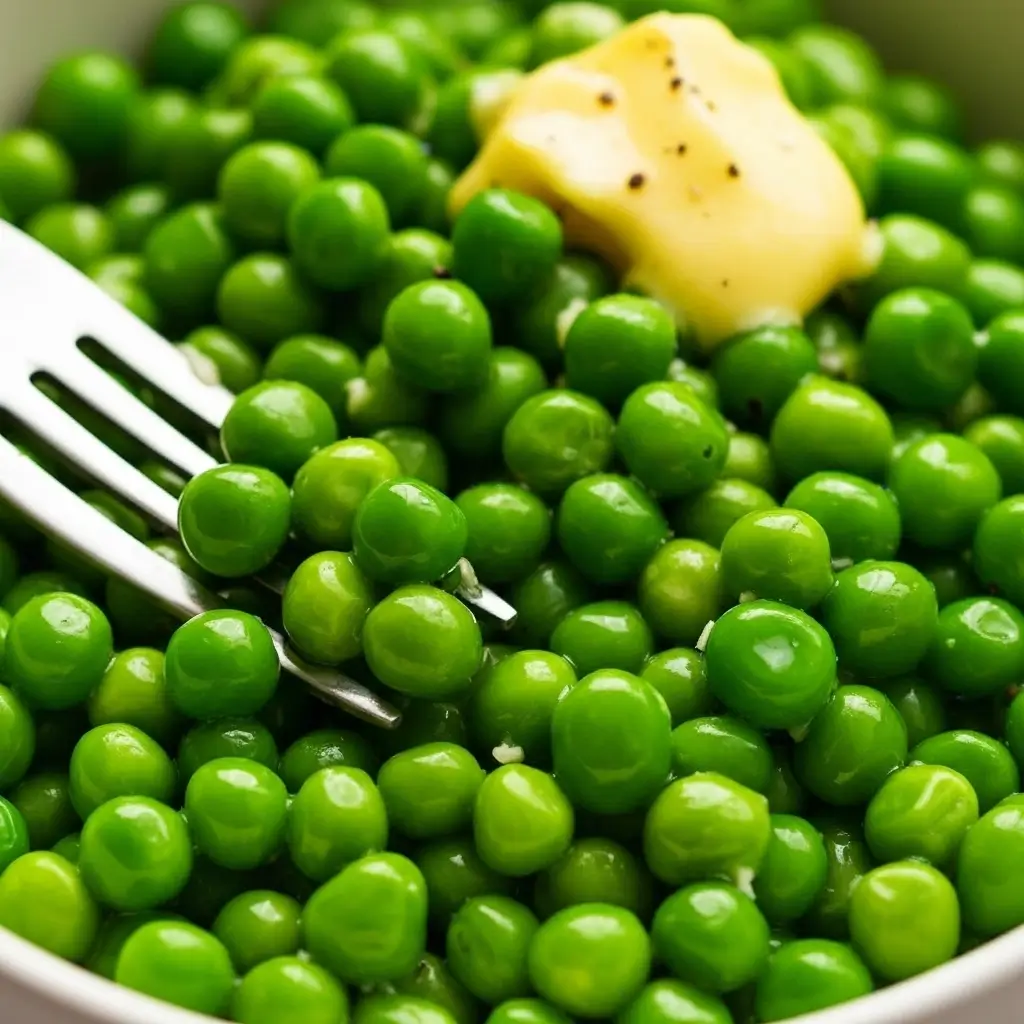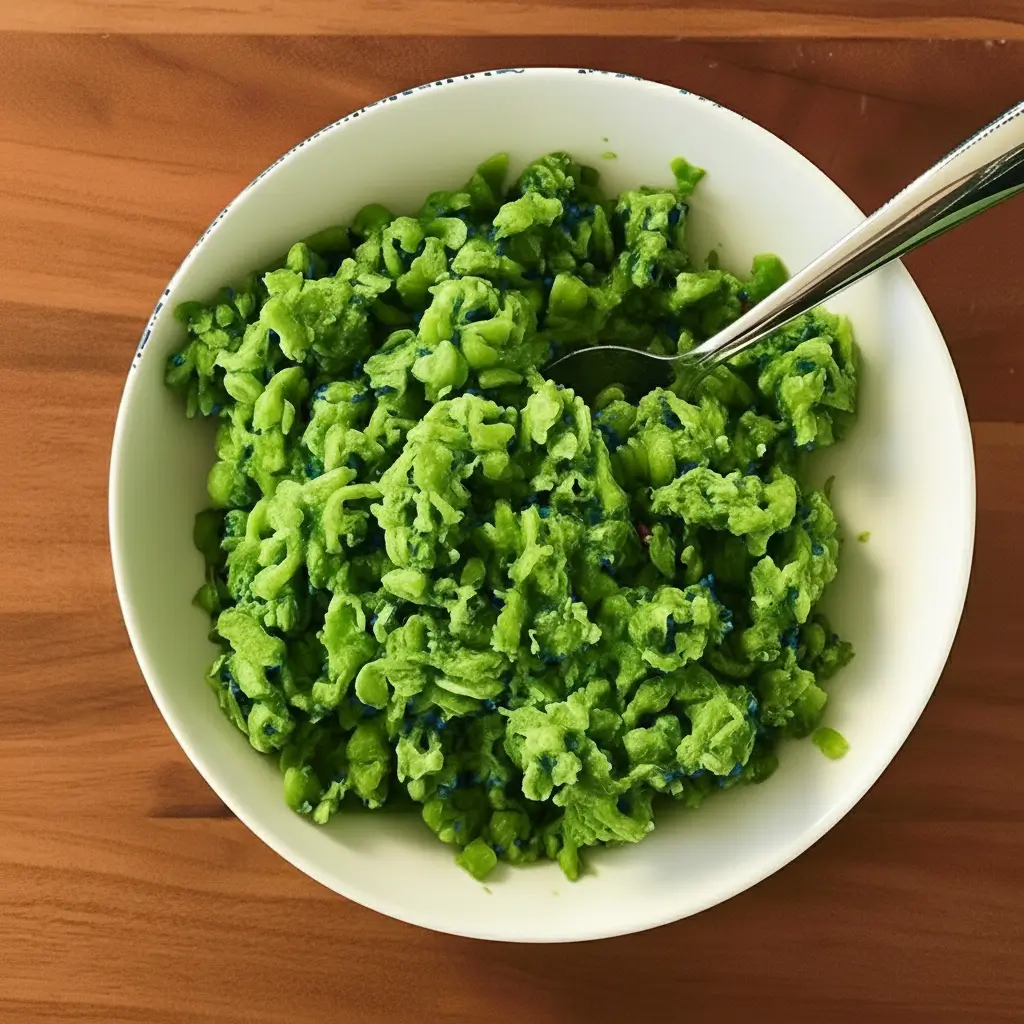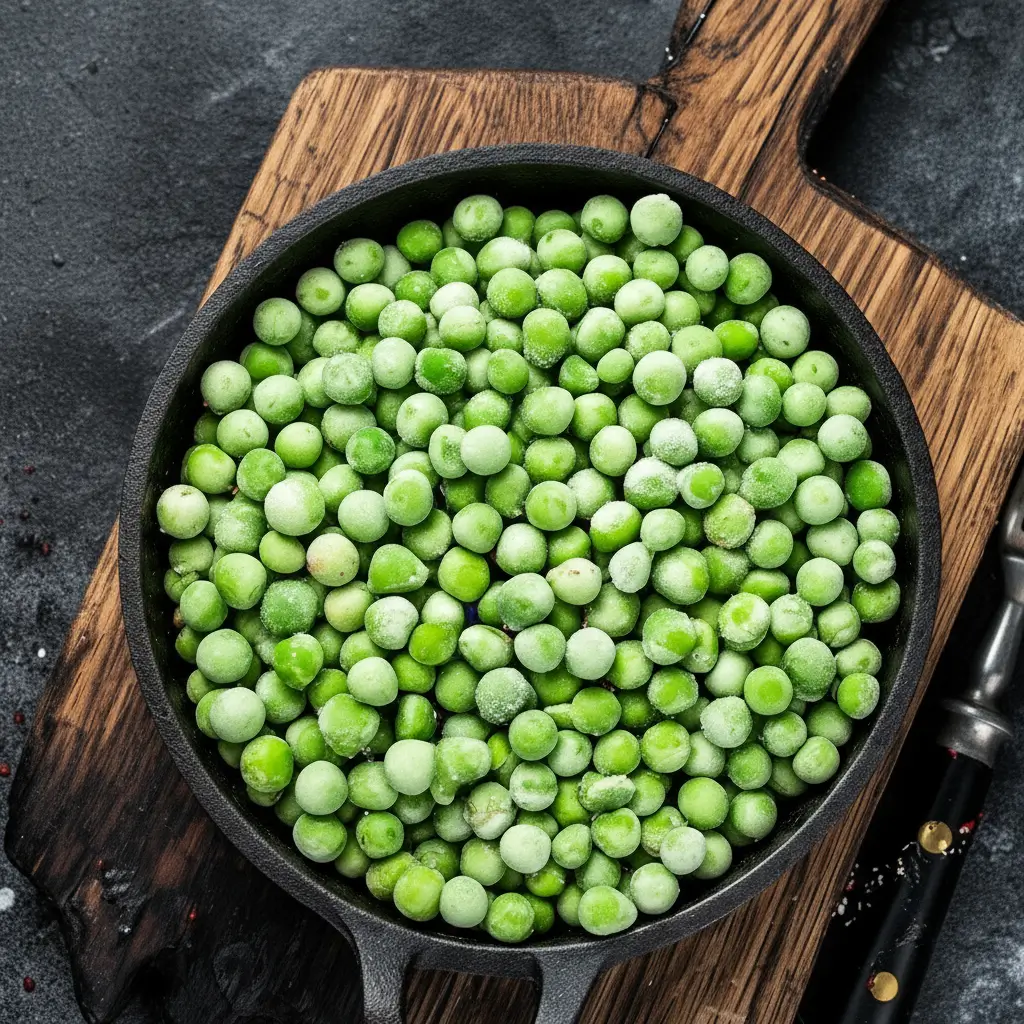Can cats eat peas? 3 safe ways to offer them to your cat
The Great Pea Question Every Cat Owner Asks
I’ve spent over a decade answering countless questions about feline nutrition, and one inquiry consistently appears in my inbox: can cats eat peas? If you’ve ever caught your curious kitty eyeing those little green spheres on your dinner plate, you’re certainly not alone in wondering whether sharing is safe.
Table of Contents
The good news is that peas can indeed be a healthy addition to your cat’s diet when prepared correctly. However, as with any human food, there are essential guidelines every responsible cat owner must follow. Throughout my career working with feline nutrition, I’ve seen both the benefits of incorporating vegetables like peas and the problems that arise when they’re served improperly.
In this comprehensive guide, I’ll share everything you need to know about feeding peas to cats, including the top three safest preparation methods I’ve developed and refined over years of practice. Whether you’re looking to add variety to your cat’s diet or searching for healthy treat alternatives, you’ll find practical, veterinarian-approved advice here.
Can Cats Eat Peas Safely?
Yes, cats can eat peas safely in moderation. Peas are non-toxic to felines and provide beneficial nutrients including protein, fiber, vitamins A, C, and K, plus essential minerals. However, peas should only serve as occasional treats, not dietary staples, since cats are obligate carnivores requiring primarily meat-based nutrition. Always serve peas plain, cooked, and in small quantities.
Understanding Your Cat’s Nutritional Needs
Before diving into specific serving methods, I believe it’s crucial to understand why this question matters so much. Cats possess unique digestive systems that differ dramatically from humans and even dogs.
Why Cats Are Obligate Carnivores
Cats evolved as strict meat-eaters, meaning their bodies are specifically designed to derive nutrition from animal proteins. Unlike omnivores, felines lack certain digestive enzymes needed to efficiently process plant materials. Their digestive tracts are shorter, their teeth are designed for tearing meat, and their nutritional requirements center around amino acids like taurine found primarily in animal tissue.
This doesn’t mean vegetables are harmful—quite the opposite when used appropriately. It simply means we must approach plant-based foods as supplements rather than substitutes.
Where Peas Fit Into the Picture
When cat owners ask whether felines can enjoy peas, they’re often surprised by my positive response. Despite being obligate carnivores, cats can benefit from small amounts of certain vegetables. Peas offer a safe, low-calorie option that many cats actually enjoy.
I remember one particular client whose senior cat had become bored with commercial treats. Introducing properly prepared peas as occasional rewards reinvigorated treat time and provided additional fiber supporting digestive health.
The Nutritional Benefits of Peas for Cats
Let me walk you through exactly why peas have earned their place among cat-safe vegetables in my professional recommendations.
Protein Content
Peas contain surprisingly high plant-based protein content for a vegetable. While this cannot replace animal protein in your cat’s diet, it does provide supplementary amino acids that support overall health.
Fiber for Digestive Health
Dietary fiber in peas promotes healthy digestion and can help prevent constipation—a common issue I encounter in indoor cats with sedentary lifestyles. The fiber content also supports healthy gut bacteria, contributing to overall wellness.
Essential Vitamins and Minerals
Peas deliver an impressive nutritional profile including:
- Vitamin A: Supports eye health and immune function
- Vitamin K: Essential for proper blood clotting
- Vitamin C: Provides antioxidant benefits
- Iron: Supports healthy blood cell production
- Potassium: Maintains proper muscle and nerve function
Low-Calorie Treat Option
With obesity affecting a significant percentage of domestic cats, finding low-calorie treat alternatives has become increasingly important. Peas provide a satisfying snack option without the caloric density of many commercial treats.
Top 3 Safe Ways to Serve Peas to Your Cat
Now we arrive at the heart of this guide—my three tested and trusted methods for incorporating peas into your cat’s diet safely. Each method addresses specific concerns while maximizing palatability and nutritional benefit.
Method 1: Plain Steamed Peas

This remains my most-recommended approach for first-time introduction and ongoing serving.
Why steaming works best:
Steaming softens peas sufficiently for easy digestion while preserving maximum nutritional content. Unlike boiling, which leaches vitamins into the water, steaming maintains the vegetable’s beneficial properties.
Step-by-step preparation:
Begin with fresh or frozen peas—both work equally well. Avoid canned varieties, which I’ll discuss in detail later. Steam the peas until tender, approximately 5-7 minutes for fresh or 3-4 minutes for frozen. Allow complete cooling before serving, as cats are sensitive to temperature extremes. Mash gently or serve whole depending on your cat’s preference and chewing ability.
Portion guidelines:
Start with just two or three peas during initial introduction. This allows you to monitor for any digestive upset or allergic reactions. For ongoing treats, limit serving to 5-10 peas maximum, no more than two to three times weekly.
Method 2: Mashed Pea Food Topper

This technique works wonderfully for cats who need encouragement to eat their regular food or those transitioning to new diets.
Why this method excels:
Some cats refuse whole peas due to texture preferences. By creating a smooth mash, you eliminate textural obstacles while still delivering nutritional benefits. Additionally, the pea’s natural sweetness can entice picky eaters to finish their meals.
Step-by-step preparation:
Steam peas as described above until very soft. Place cooled peas in a bowl and mash thoroughly with a fork, adding a tiny splash of water if needed for consistency. The result should be smooth enough to mix seamlessly with your cat’s regular food. Stir one teaspoon of mashed peas into your cat’s meal.
Best applications:
I frequently recommend this method for cats recovering from illness who need appetite stimulation. The novel taste and smell can spark interest in food when other approaches fail. It also works beautifully for senior cats with dental issues who struggle with harder textures.
Method 3: Frozen Pea Treats for Summer Enrichment

This creative serving method provides both nutrition and entertainment, addressing two feline needs simultaneously.
Why frozen peas work:
During warm months, cats appreciate cooling treats just as we do. Frozen peas also engage your cat’s hunting instincts when rolled across floors, providing mental stimulation and physical activity alongside nutritional benefit.
Step-by-step preparation:
Steam fresh peas briefly, just 2-3 minutes, until slightly softened but not fully cooked. This pre-cooking step makes the peas safer to chew when frozen. Spread peas on a baking sheet in a single layer and freeze for two hours. Transfer to an airtight container for storage.
How to serve:
Offer one or two frozen peas directly as treats, or roll them across hard flooring for interactive play. Many cats find chasing these tiny green spheres absolutely irresistible. Supervise initially to ensure your cat chews properly rather than swallowing whole.
Peas to Avoid: What Never to Feed Your Cat
Understanding what not to serve proves equally important as knowing safe preparation methods. I’ve unfortunately seen health issues arise from well-intentioned but misguided feeding choices.
Canned Peas
Never feed canned peas to your cat. Commercial canned vegetables typically contain high sodium levels that can stress feline kidneys and cardiovascular systems. Some also contain added sugars or preservatives unsuitable for cats.
Seasoned or Flavored Peas
Any peas prepared with butter, salt, garlic, onion, or other seasonings pose significant risks. Garlic and onion are particularly dangerous, causing oxidative damage to red blood cells even in small amounts.
Raw Dried Peas
Dried peas present choking hazards and are extremely difficult for cats to digest. Their hard texture can also damage teeth. Always use fresh or frozen varieties that can be properly softened through cooking.
| Pea Type | Safe for Cats? | Notes |
|---|---|---|
| Fresh peas (cooked) | ✓ Yes | Best option, steam until tender |
| Frozen peas (cooked) | ✓ Yes | Equally nutritious, convenient |
| Canned peas | ✗ No | High sodium, potential additives |
| Seasoned peas | ✗ No | Dangerous seasonings possible |
| Raw dried peas | ✗ No | Choking hazard, hard to digest |
| Sugar snap peas | ✓ Limited | Remove pod, serve peas only |
Signs Your Cat May Not Tolerate Peas
While peas are generally safe, individual cats may react differently. Throughout my career, I’ve learned to recognize warning signs that indicate a particular food isn’t suitable for a specific feline.
Digestive Upset Symptoms
Watch for vomiting, diarrhea, or excessive gas following pea consumption. These symptoms typically appear within 24 hours and suggest your cat’s system struggles to process this vegetable.
Allergic Reaction Indicators
Though rare, some cats develop allergies to legumes. Symptoms include itching, skin irritation, facial swelling, or respiratory changes. If you observe any of these signs, discontinue pea feeding immediately and consult your veterinarian.
Behavioral Changes
Cats who feel unwell often become lethargic, hide, or show decreased appetite. Any unusual behavior following new food introduction warrants attention and possible veterinary consultation.
When to Consult Your Veterinarian
I always encourage cat owners to discuss dietary changes with their veterinary professionals, especially in certain circumstances.
Cats with existing health conditions may have specific dietary restrictions. Kidney disease, diabetes, and gastrointestinal disorders may all influence whether peas are appropriate.
Senior cats sometimes have reduced digestive efficiency and may not tolerate new foods as readily as younger felines.
Kittens under one year should primarily receive complete, balanced kitten food. While occasional pea treats aren’t harmful, nutritional focus should remain on growth-appropriate commercial diets.
Frequently Asked Questions About Cats and Peas
How many peas can I give my cat at once?
For most adult cats, 5-10 peas represent an appropriate serving size. Start with just 2-3 peas during initial introduction to monitor for adverse reactions. Remember that treats, including vegetables, should constitute no more than 10% of your cat’s daily caloric intake.
Can cats eat peas every day?
While peas are safe, daily feeding isn’t recommended. Limit pea treats to two or three times weekly to maintain dietary balance. Cats require consistent animal protein intake, and excessive plant material may interfere with proper nutrition absorption.
Do peas help with cat constipation?
The fiber content in peas can support digestive regularity and may help mild constipation cases. However, chronic constipation requires veterinary evaluation. Never rely solely on dietary changes to address persistent digestive issues.
Are frozen peas safe straight from the freezer?
I recommend brief steaming before freezing, as completely raw frozen peas can be too hard and present digestive challenges. Pre-cooking softens the peas slightly while allowing them to freeze effectively for summer treats.
Can kittens eat peas?
Kittens over 8 weeks old can safely try small amounts of properly prepared peas. However, their primary nutrition should come from complete kitten food formulated for growth. Treats should remain minimal during this critical developmental stage.
Conclusion: Making Informed Decisions About Peas for Your Cat
After exploring this topic thoroughly, you now have a definitive answer to the question can cats eat peas—yes, absolutely, when prepared appropriately and served in moderation. The three methods I’ve outlined provide safe, practical approaches to incorporating this nutritious vegetable into your cat’s treat rotation.
Remember that peas should complement, never replace, your cat’s balanced commercial diet. They offer a wonderful low-calorie alternative to processed treats, provide beneficial fiber and vitamins, and can add enrichment to your cat’s daily routine. Whether steamed as simple rewards, mashed as food toppers, or frozen for summer entertainment, peas represent a safe addition to your feline feeding toolkit.
As with any dietary change, observe your individual cat’s response and consult your veterinarian if concerns arise. Every cat is unique, and what works beautifully for one may not suit another. Trust your observations, prioritize moderation, and enjoy watching your cat discover this healthy green treat.
Your cat’s health and happiness remain the ultimate goals, and informed feeding decisions like these demonstrate the loving care that makes the bond between humans and cats so special.

